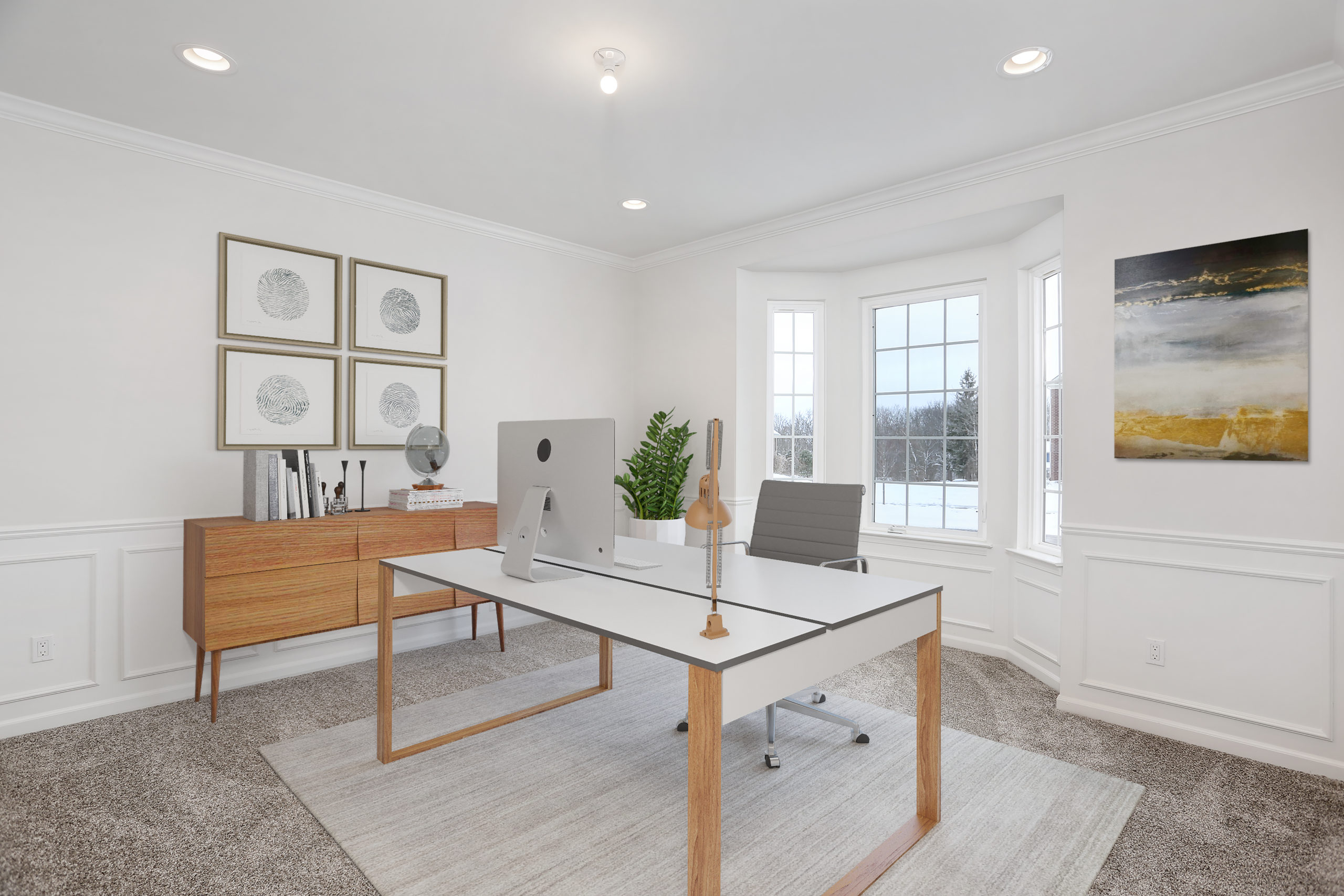
How to Create a Home Office
So many of us have found ourselves working at home. Many of us set up makeshift offices at our kitchen tables surrounded by cereal boxes or in the living room, which is the epicenter of domestic life and can be challenging if you share space with others.
While that’s fine for a few days, a real home office will not only be more comfortable, but help with your productivity. Working at home undoubtedly has its advantages. It provides flexibility and the lack of commute saves us time and money. It can also, however, blur the line between your personal and professional life. A space that separates your work from personal life can improve both.
To do so, first identify your basic needs. Do you need a work table as well as a computer desk? Do you need file cabinets? Any additional equipment? It is worthwhile to consider a desk table instead of, or in addition to, a chair so you can stand and work at times, as this healthy option can help with fatigue and stiffness from sitting too long. Ergonomics is important in choosing furniture and setting up your office to ensure that you don’t end up with back, wrist or other issues. Remember you will be spending a lot of hours in this space–If you have to reach awkwardly, hunch forward, or contort your body unnaturally to work, you could end up with problems.
Once you know what your home office will entail, you need a space to accommodate it. Ideally, your work space should provide privacy—such as a spare room with a door. This reduces noise, which is crucial if you are on the phone or video-chats a lot. If you don’t have that much space to dedicate to an office, partition an area off from the rest of the room.
Some tips:
- Do a little decorating, such as adding a few plants or perhaps a framed certificate or so, to make it comfortable and look professional.
- Light is important, so create a space that is near a window. Natural light has been proven to boost mood and can help with eyestrain and headaches.
- Feng Shui, which recommends object placement to ensure the flow of a room, is a good philosophy to research when finishing your space to make it more comfortable and productive.
- In Feng Shui, for example, most people will feel more relaxed with their desk facing a window or door, rather than with their back to a door. Facing a window is preferable because of that energizing natural light.
- When your choosing color theme, think of the skills you need to succeed in your career. If your career is stressful, think monochrome muted tones. All Tan -Pantone Ash 16-3802. All White -Pantone Brilliant White 11-4001. All Blue -Pantone Mosaic Blue 14-4528.
- If you need an energizing color for your home office, Psychology Today recommends greens for creativity. Pantone Golden Lime 16-0543.
Once you are set up, keeping dedicated hours can help you from overworking or getting distracted from work. The benefit of working from home is flexibility, so of course there may be days that you work a little longer or mornings you sleep a little longer, but track your time.
Finally, when the day is over, shut down work equipment and do something to “call it a day”. Move to another room or outside with a cup of tea or a book; go for a run; walk around the block; or engage a friend or family member in non-work-related conversation.
By separating your work and personal life you will ensure a good balance that will make working at home a great benefit.